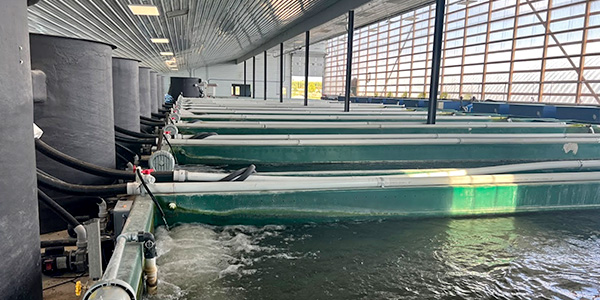Warning Signs: Top 10 Symptoms of Parasites in Koi Fish
Posted by Ellen Kloubec on 18th Aug 2014
Koi fish and butterfly koi fish (fantail koi) can easily be exposed to fish parasites. It's a fact of life in koi-keeping. Koi will exhibit some, or all, of these signs when parasite activity occurs.
1.) Flashing and darting, or rubbing on pond edges.
If koi fish are being bothered by parasites you will see them flash or dart about. Many times it appears as if they are trying to rid an irritant or shake something off of their back. Occasionally they will shake their head as if to dislodge something irritating their gills.
2.) Loss of appetite or lethargy.
When koi suddenly refuses to eat you can be sure there is something going on. A loss of appetite as well as lethargy can be a signal of internal or external parasites.
3.) Hanging motionless in the pond water.
Koi will be completely still when resting, but if they ‘hang’ in the water then something is definitely going on. Fish infected with parasites may hang in the water with head slightly up or slightly down.
4.) Unusual gill activity.
A koi’s gills will move methodically as it breathes. However, if the gills become damaged or infested with parasites you may notice bleeding from the gills or excessive movement, similar to panting.
5.) Isolation, not mixing with other koi.
Koi are generally gregarious, if you notice one of more of your pets that become isolated or seem uninterested you should suspect parasite attack.
6.) Clamped fins.
When a koi clamps their pectoral fins to their sides it is a common sign of parasites. Fish will actually swim with the pectorals held close to their body when considerable quantities of parasites are present.
7.) Foggy eyes, patches of fungus, swelling, bumps, sores, ulcers or lesions.
These are all signs of damage that can be caused by parasites, or the advancement of secondary infections due to extensive parasitic activity. Some parasites burrow under the skin to form cysts that appear as spots or pustules on the host fish. Also, tiny holes and abrasions from parasite penetration provide a place for bacteria to propagate and cause numerous complications.
8.) Congregating in high oxygen concentration areas.
Parasites can cause damage to delicate gill tissues of koi. When gill filaments are impaired the fish cannot successfully transfer oxygen to the blood stream. It will seek out areas of high oxygen concentration such as waterfalls or near an air stone in search of oxygen rich water.
9.) Lying on its side on pond floor.
Often when a koi is inundated with parasites it will lie on the pond floor. You will see it jerk when disturbed and appear perfectly fine momentarily, only to resume its restful position at the pond bottom. This can be very alarming to the koi hobbyist.
10.) Reddening of skin or fins.
A koi’s skin and fins can become red and irritated with the onset of parasites. The pests are digging in and hanging on to the host with tiny hooks and claws. They are also spearing the fish’s skin in order to gain nourishment from its blood and tissue.
Learn about Koi Parasites here: https://www.koihealth.info/parasites.html


